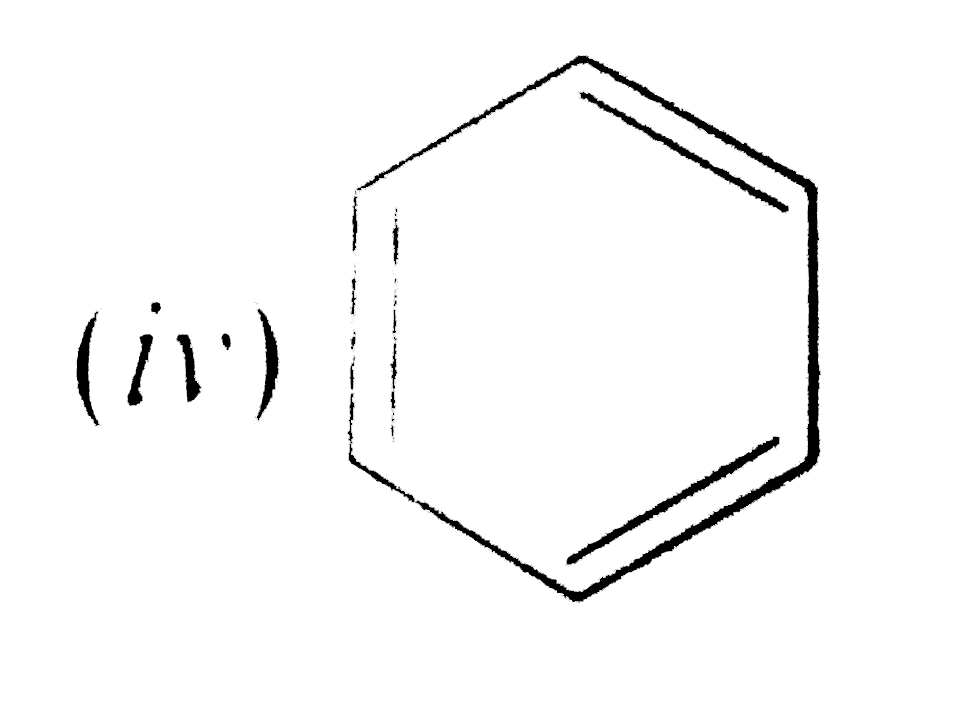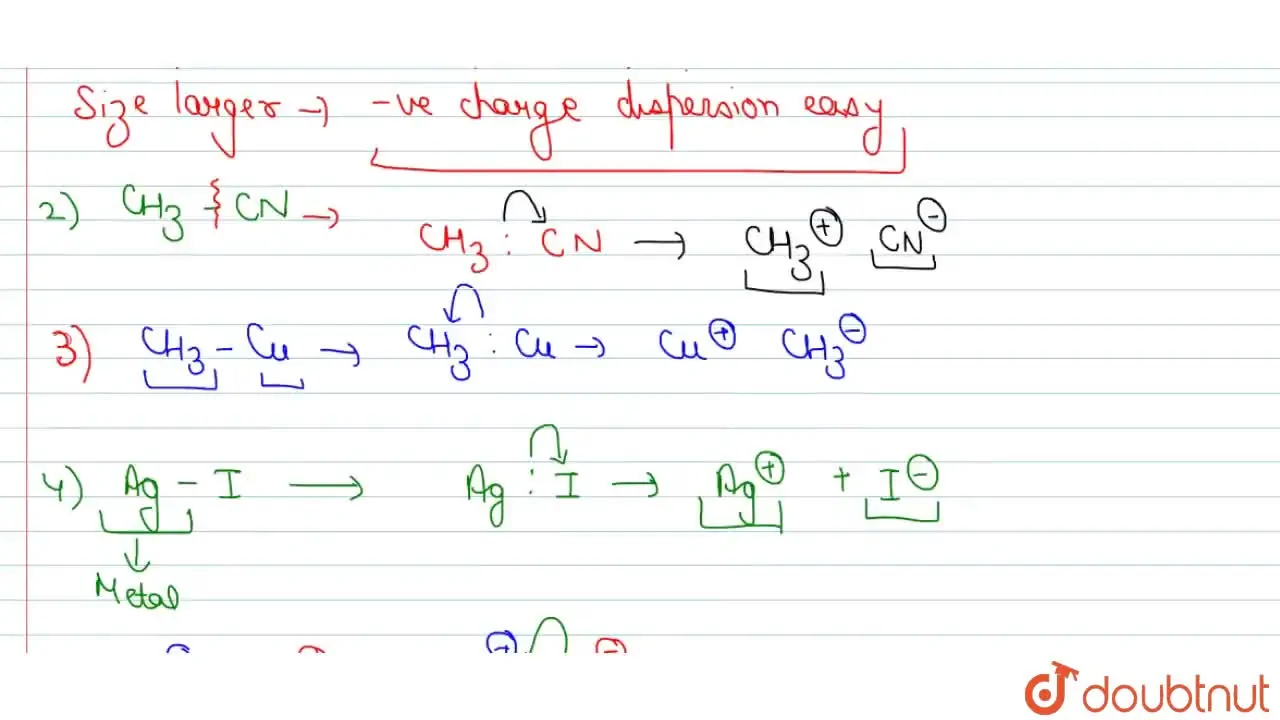Using curved-arrow notation, show the formation of reactive intermediates when convalent bonds in the following substance undergo heterolytic (polar) cleavage.
(i) CH3−SCH3 , (ii) CH3−CN
(iv) CH3−Cu , (iv) Ag−I
(v) H3N+−BF3 , (vi) Cu(−OH2)2+4
Stratergy: Both bonding electrons remain with the more electronegative atom. If the bonding atom have same electronegetivities,, then the bonding electrons are taken away by the larger atom as it can sustain the negative charge more effectively.
(i) 
Both C and S have identical electronegativities (2.5) on the paulling's scale. Since S atom is bigger atom can disperse the negative charge more effectively.
(ii) 
Due to the presence of N atom which is more electronegative than C atom, the CN group takes away the bonding e− pair.
(iii) 
Cu (metal) is less electronegative than C (a nonmetal) Thus, CH3 group takes away the shar e− pair.
(iv) 
I ( a nonmetal) is more electronegative than Ag ( a metal).
(v) 
N(3.0) is more electronegative than B(2.0). Thus, the shared e− pair is taken away by the N atom.
(vi) 
Cu is a metal while O is a nonmetal. Thus, bonding electron pairs moves with O atom.
Related Playlists
- BOOK - R SHARMACHAPTER - GENERAL ORGANIC CHEMISTRYEXERCISE - Follow up test 17videos
GENERAL ORGANIC CHEMISTRY
- BOOK - R SHARMACHAPTER - GENERAL ORGANIC CHEMISTRYEXERCISE - Follow up test 28videos
GENERAL ORGANIC CHEMISTRY
- BOOK - R SHARMACHAPTER - EQUILIBRIUMEXERCISE - ARCHIVES69videos
EQUILIBRIUM
- BOOK - R SHARMACHAPTER - ISOMERISMEXERCISE - Archives11videos
ISOMERISM
Similar Questions
Using the curved-arrow notation, show the formation of reactive intermediates when the following convalent bonds undergo heterolytic cleavage :
(a) CH3−S−CH3
(b) CH3−CN
( c) CH3−Cu .View SolutionUsing the curved-arrow notation, show the formation of reactive intermediates when the following convalent bonds undergo heterolytic cleavage :
(a) CH3−S−CH3
(b) CH3−CN
( c) CH3−Cu .View SolutionUsing curved arrows rotation,show the formation of reactive intermediates when the following covalent bonds undergo heterolytic fission.
(a) CH3−CN
(b) CH3−CuView SolutionUsing curved arrow notation show the formation of reaction intermediates when the following covalent bonds undergo heterolysis.
(i) H3C−CH2−Cl (ii) H3C−C≡N (iii) CH3ONaView SolutionIndicate the number of σ and π bonds in the following molecules:
(i) CH3−CH=CH2 (ii) CH3−CH2−CH2−CH3
(iii) CH3−C≡C−CH3 (iv) View Solution
View SolutionHow many bonds (σ and π) are there in the following molecules?
(i) H2C=C=CH2 (ii) CH3−C≡CH
(iii) H2C=CH−C≡N (iv) CH3NO2
(v) CH3OH (iv) C2H2View SolutionIn CH3OH the bond that undergoes heterolytic fission most readily is
View SolutionWhat are the hydridised states of carbon atoms in the following compounds ?
(i) CH2=C=O (ii) CH3CH=CH2 (iii) (CH3)2C=O
(iv) CH=CH2CN (v) C6H6View SolutionArrange the following alcohols in order of increasing reactivity towards sodium metal.
(i) CH3OH
(ii) (CH3)2CH−OH
(iii) CH3CH2OH
(iv) (CH3)3C−OHView SolutionHow many sigma and pi bonds are present in the following molecules :
(i)CH3−CH3 (ii)CH3−OH (iii)CH2=CH−C≡N (iv)CH2=C=CH2CH3 (v)CH≡CCH=CHCH3View Solution


